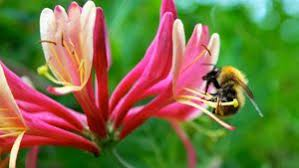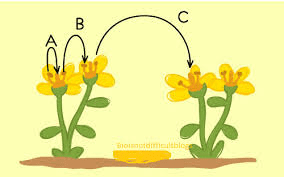Pollination is a crucial process in plant reproduction. It involves the transfer of pollen from the male part of a flower (the stamen) to the female part (the pistil). This process enables plants to produce seeds and fruits, which are essential for the continuation of plant species.
Pollination can be carried out by various methods, each suited to different types of plants and their environments. Understanding these methods helps in appreciating how plants reproduce and how we can support their growth and productivity.
Types of Pollination Methods
Pollination methods can be broadly classified into several categories based on how pollen is transferred from one flower to another. Each method has its own characteristics and is adapted to specific types of plants.
1. Self-Pollination
Self-pollination occurs when pollen from a flower’s stamen fertilizes its own pistil. This method does not require pollen transfer between flowers, which means it can occur within a single flower or between flowers on the same plant.
i. Mechanism: In self-pollination, the flower’s own pollen fertilizes its ovules. Some flowers have both male and female parts close together, making self-pollination easier.
ii. Advantages: This method ensures that plants can reproduce even in the absence of pollinators. It is especially useful in environments where pollinators are scarce.
iii. Examples: Many plants, such as tomatoes, peas, and some orchids, can self-pollinate.
2. Cross-Pollination
Cross-pollination involves the transfer of pollen from one flower to another flower on a different plant of the same species. This method increases genetic diversity, which can improve plant resilience and adaptability.
i. Mechanism: In cross-pollination, pollen is transferred from the stamen of one flower to the pistil of another flower. This transfer can occur through various means such as insects, birds, or wind.
ii. Advantages: Cross-pollination promotes genetic variation, which can lead to healthier and more resilient plants.
iii. Examples: Apples, almonds, and cucumbers often require cross-pollination to produce fruit.
3. Wind Pollination
Wind pollination, also known as anemophily, relies on the wind to carry pollen from one flower to another. Plants adapted to wind pollination usually produce large quantities of lightweight pollen.
i. Mechanism: Plants that use wind pollination have flowers that release pollen into the air. The wind then carries this pollen to other flowers.
ii. Advantages: This method does not depend on animals and can cover large distances, which is useful for plants in open or exposed areas.
iii. Examples: Many grasses, corn, and birch trees use wind pollination.
4. Water Pollination
Water pollination, or hydrophily, involves the transfer of pollen through water. This method is less common and typically occurs in aquatic plants.
i. Mechanism: In water pollination, pollen is transported by water currents from one flower to another. The pollen can either float on the water’s surface or be carried by underwater currents.
ii. Advantages: This method is suited for plants that grow in aquatic or semi-aquatic environments where other pollination methods are less effective.
iii. Examples: Some aquatic plants, like eelgrass and certain types of seagrasses, use water pollination.
4. Insect Pollination
Insect pollination is one of the most common and effective forms of pollination. Insects such as bees, butterflies, and moths are major pollinators.
i. Mechanism: Insects visit flowers to collect nectar and pollen. As they move from flower to flower, they inadvertently transfer pollen between flowers.
ii. Advantages: Insects are highly efficient pollinators. Bees, for example, have specialized body structures that help them collect and transfer pollen effectively. This method ensures a high level of pollination success.
iii. Examples: Bees pollinate a wide range of plants, including fruits like apples and strawberries, and vegetables like tomatoes. Butterflies and moths also pollinate various flowering plants.
5. Bird Pollination
Bird pollination, or ornithophily, involves birds transferring pollen while feeding on nectar. Hummingbirds are the most well-known bird pollinators.
i. Mechanism: Birds visit flowers to drink nectar. During this process, pollen sticks to their beaks and feathers. When they move to another flower, the pollen is transferred, aiding in pollination.
ii. Advantages: Birds are attracted to brightly colored flowers and those with tubular shapes, which often produce more nectar. This method is effective in regions where birds are abundant.
iii. Examples: Hummingbirds pollinate plants like trumpet creepers and bee balm, while honeycreepers pollinate various Hawaiian plants.
6. Bat Pollination
Bat pollination, or chiropterophily, involves bats transferring pollen while feeding on nectar from night-blooming flowers.
i. Mechanism: Bats are nocturnal and are attracted to flowers that bloom at night. As they feed on the nectar, pollen sticks to their fur. When they move to other flowers, they help transfer pollen.
ii. Advantages: Bats are crucial for pollinating plants that bloom at night. Their large size and ability to hover allow them to access flowers that are out of reach for many other pollinators.
iii. Examples: Bats pollinate flowers of plants like agave, which is used to produce tequila, and certain species of cacti.
7. Pollination by Other Animals
Besides insects, birds, and bats, several other animals play a role in pollination. These include small mammals, reptiles, and even some fish.
i. Mechanism: These animals visit flowers to feed on nectar or fruit. During their visit, they inadvertently transfer pollen between flowers.
ii. Advantages: This type of pollination can help plants in specific environments where these animals are prevalent. It adds to the diversity of pollination methods.
iii. Examples: Small mammals like squirrels can pollinate plants by carrying pollen from one flower to another. Some reptiles, like geckos, and even fish species like the aquatic plant pollinated by water-dwelling creatures, also contribute to pollinati
Read Also: Harvesting and Processing Of Cacao Fruits
Advantages And Disadvantages Of Each Pollination Method

| Pollination Method | Advantages | Disadvantages |
|---|---|---|
| Self-Pollination | 1. Ensures reproduction even without pollinators. 2. Consistent traits passed to offspring. 3. Reliable in isolated environments. | 1. Limited genetic diversity. 2. Potential for inbreeding depression. 3. Reduced adaptability to changing conditions. |
| Cross-Pollination | 1. Promotes genetic diversity. 2. Offspring can be more resilient and adaptable. 3. Enhances plant health and productivity. | 1. Depends on the presence of pollinators or environmental factors. 2. May require specific conditions or distances for successful transfer. |
| Wind Pollination | 1. Can cover large distances. 2. Does not rely on animals, making it independent of pollinator availability. | 1. Inefficient with low pollen transfer rates. 2. Can result in waste of pollen. 3. Limited to plants in open or exposed areas. |
| Water Pollination | 1. Effective in aquatic environments. 2. Utilizes water currents for pollen transfer. 3. Adapted to specific aquatic plant needs. | 1. Limited to aquatic or semi-aquatic plants. 2. Dependent on water currents and environmental conditions. |
Factors Affecting Pollination
1. Pollinator Availability: The presence and activity of pollinators (e.g., bees, butterflies, birds) directly impact pollination success. A lack of pollinators can reduce pollination rates and affect plant reproduction.
2. Environmental Conditions: Weather conditions such as wind, rain, and temperature can influence the effectiveness of pollination methods. For instance, strong winds can aid wind pollination but may disrupt other methods.
3. Flower Structure: The design of flowers, including their size, color, and scent, can attract or repel pollinators. Flowers must be adapted to their specific pollination method to be effective.
4. Pollen Characteristics: The quantity, size, and stickiness of pollen can affect its ability to be transferred between flowers. Some plants produce more pollen to increase the chances of successful pollination.
5. Plant and Flower Timing: The timing of flowering and the availability of pollen can impact pollination success. Synchronization between plant flowering periods and pollinator activity is crucial.
6. Habitat and Ecosystem: The surrounding habitat and ecosystem play a role in pollination. Diverse environments with abundant pollinators and suitable conditions support effective pollination.
Read Also: Collection, Handling, Storage and Pre-Treatment of Seeds
Importance of Pollination in Agriculture

1. Increased Crop Yields: Effective pollination leads to better fruit and seed production, resulting in higher crop yields. Many of the foods we eat, such as fruits and vegetables, rely on pollination.
2. Genetic Diversity: Pollination methods, especially cross-pollination, contribute to genetic diversity within crops. This diversity enhances plant resilience and adaptability to pests, diseases, and environmental changes.
3. Economic Benefits: Pollination supports agricultural productivity and profitability. Many crops depend on pollination, and its success impacts the agricultural economy, including farming income and food prices.
4. Ecosystem Health: Pollination supports the health and balance of ecosystems. By facilitating plant reproduction, it helps maintain biodiversity and the functioning of natural systems.
5. Food Security: Reliable pollination ensures the availability of a diverse range of crops and contributes to global food security. Without effective pollination, food supplies could be compromised.
Read Also: Collective Farming: The Key to Sustainable Food Systems

